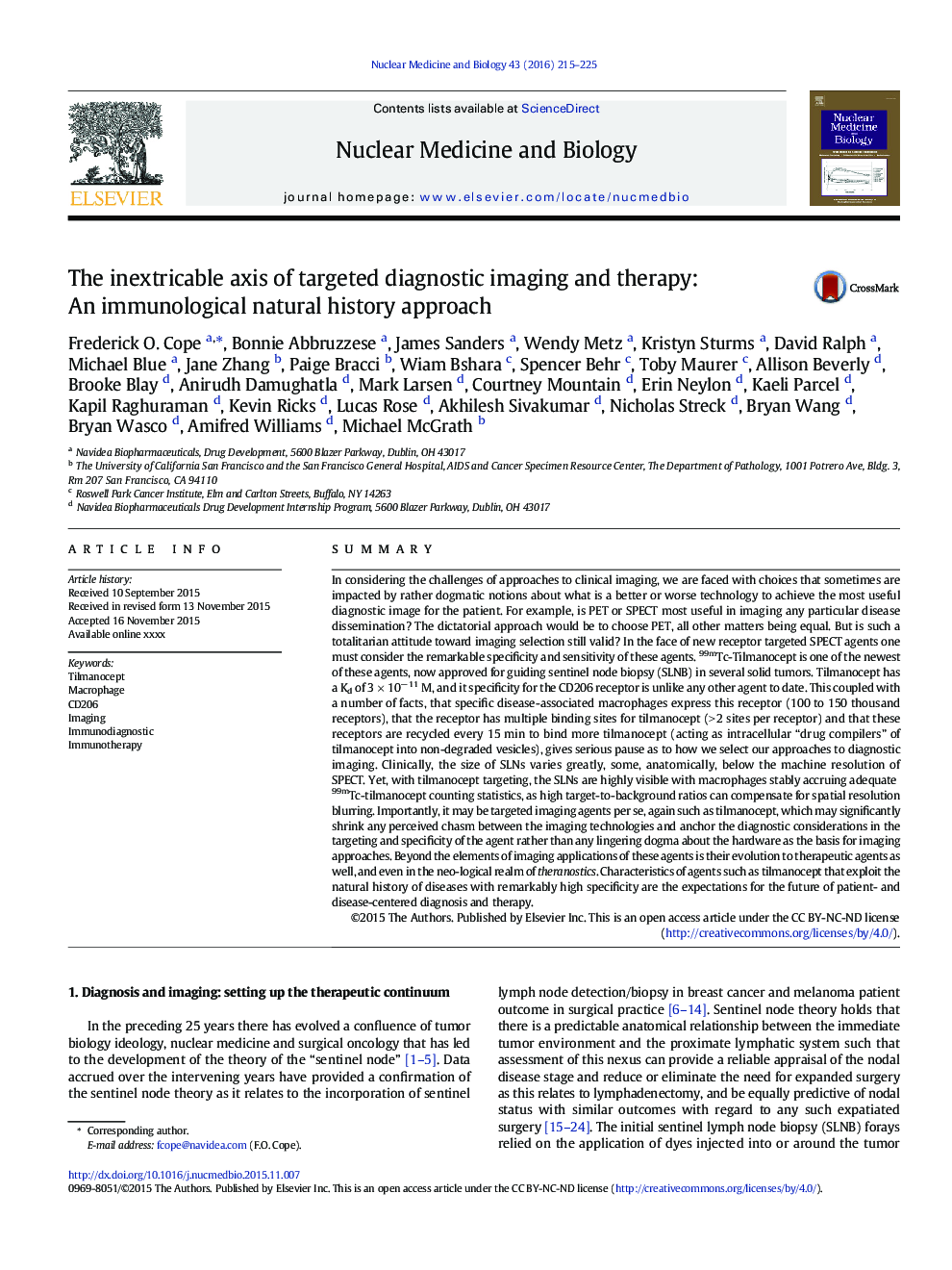| کد مقاله | کد نشریه | سال انتشار | مقاله انگلیسی | نسخه تمام متن |
|---|---|---|---|---|
| 10915866 | 1090174 | 2016 | 11 صفحه PDF | دانلود رایگان |
عنوان انگلیسی مقاله ISI
The inextricable axis of targeted diagnostic imaging and therapy: An immunological natural history approach
ترجمه فارسی عنوان
محور غیرقابل تصور تصویربرداری و درمان تشخیصی هدفمند: رویکرد تاریخ طبیعی ایمونولوژیک
دانلود مقاله + سفارش ترجمه
دانلود مقاله ISI انگلیسی
رایگان برای ایرانیان
کلمات کلیدی
موضوعات مرتبط
علوم زیستی و بیوفناوری
بیوشیمی، ژنتیک و زیست شناسی مولکولی
تحقیقات سرطان
چکیده انگلیسی
In considering the challenges of approaches to clinical imaging, we are faced with choices that sometimes are impacted by rather dogmatic notions about what is a better or worse technology to achieve the most useful diagnostic image for the patient. For example, is PET or SPECT most useful in imaging any particular disease dissemination? The dictatorial approach would be to choose PET, all other matters being equal. But is such a totalitarian attitude toward imaging selection still valid? In the face of new receptor targeted SPECT agents one must consider the remarkable specificity and sensitivity of these agents. 99mTc-Tilmanocept is one of the newest of these agents, now approved for guiding sentinel node biopsy (SLNB) in several solid tumors. Tilmanocept has a Kd of 3 Ã 10â 11 M, and it specificity for the CD206 receptor is unlike any other agent to date. This coupled with a number of facts, that specific disease-associated macrophages express this receptor (100 to 150 thousand receptors), that the receptor has multiple binding sites for tilmanocept (> 2 sites per receptor) and that these receptors are recycled every 15 min to bind more tilmanocept (acting as intracellular “drug compilers” of tilmanocept into non-degraded vesicles), gives serious pause as to how we select our approaches to diagnostic imaging. Clinically, the size of SLNs varies greatly, some, anatomically, below the machine resolution of SPECT. Yet, with tilmanocept targeting, the SLNs are highly visible with macrophages stably accruing adequate 99mTc-tilmanocept counting statistics, as high target-to-background ratios can compensate for spatial resolution blurring. Importantly, it may be targeted imaging agents per se, again such as tilmanocept, which may significantly shrink any perceived chasm between the imaging technologies and anchor the diagnostic considerations in the targeting and specificity of the agent rather than any lingering dogma about the hardware as the basis for imaging approaches. Beyond the elements of imaging applications of these agents is their evolution to therapeutic agents as well, and even in the neo-logical realm of theranostics. Characteristics of agents such as tilmanocept that exploit the natural history of diseases with remarkably high specificity are the expectations for the future of patient- and disease-centered diagnosis and therapy.
ناشر
Database: Elsevier - ScienceDirect (ساینس دایرکت)
Journal: Nuclear Medicine and Biology - Volume 43, Issue 3, March 2016, Pages 215-225
Journal: Nuclear Medicine and Biology - Volume 43, Issue 3, March 2016, Pages 215-225
نویسندگان
Frederick O. Cope, Bonnie Abbruzzese, James Sanders, Wendy Metz, Kristyn Sturms, David Ralph, Michael Blue, Jane Zhang, Paige Bracci, Wiam Bshara, Spencer Behr, Toby Maurer, Kenneth Williams, Joshua Walker, Allison Beverly, Brooke Blay,
